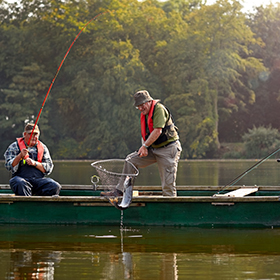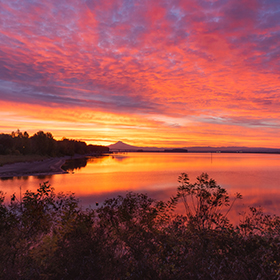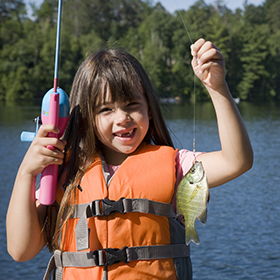Spring is prime time to fish for crappies, sunfish, and yellow perch. Check here for the best spring fishing bait and lures
Few activities in spring are more popular than chasing panfish, i.e. crappies, sunfish, and yellow perch. Spring fishing bait and lures for these species are fairly well defined, although circumstances vary depending on what stage of the spring exists where you live. As a general rule, minnows, worms, small jigs, and small jig-spinner combos are the best spring fishing bait and lures for panfish.
Natural Baits
There may be a near-even split among spring fishing bait and lures, and some anglers have clear preferences for bait over lures. Among natural baits, a live minnow is the top bait for spring, and even for for later in the season. Worms will work, too, but a minnow is the deal if you can find a concentration of fish. A live cricket is very popular for sunfish (especially bluegills, also known as bream), although worms have a big spring following in many places, including for yellow perch.
Crappies are mostly minnow eaters. Minnows hide around any kind of cover for security, so crappies go where minnows hide. Brushpiles are planted in many waters precisely to draw minnows and thus attract crappies. When you set out on a strange lake in search of crappies, think brush or anything resembling brush as cover.
Bluegills and other sunfish species have smaller mouths than crappies and are not quite the minnow chaser, but they like crickets and love worms. Of the latter, small wrigglers, or pieces of nightcrawler (not the whole crawler), are best.
Jigs and Jig-Spinner Combos
For post-spawn panfish, particularly perch and crappies, the number one lure is a small jig. This may range from a micro model to a 1/8-ounce model, although it is more likely to be in the 1/32- to 1/16th-ounce class. These are tough to cast any distance, so a light and somewhat limber rod, and a small-diameter reel completely filled with light (2- through 6-pound), fine-diameter line, are important complements.
Many jig possibilities exist, including those with assorted soft bodies, or versions with hair or other materials. Productive colors run a wide gamut. Many people have success with white or yellow jigs; when these don’t produce, try silver or gray bodies, including plastics with imbedded flakes, which produces extra pizzazz. Don’t use bodies that are too bulky or long or that have long tails.
When a plain jig doesn’t do the job or stops producing after awhile, try using a small jig with a tiny spinner blade (a jig-spinner combo). Versions with blades attached to the underside of the head or which are attached to a small overhead wire arm, spinnerbait style, catch perch and crappie alike, and sometimes sunfish. While jigs with spinners have to be fished at a speed that is fast enough to turn the blade, plain jigs should be fished as slowly as possible.
For those who have not fished a jig in and around brush, timber, and weeds, it can be done with a deft touch. Light-wire hooks enable unsnagging, but hangups can be largely avoided with careful use. It is seldom effective to fish over the top of brush and weeds, so you need to develop a good feel for the jig to work it at the proper level and still avoid hangups.
Other Lures
Natural lakes and ponds that do not have timber can provide good results to those using small spinners, especially for sunfish and perch, and mini crankbaits for crappies and occasionally perch. Both also have to be fished slowly, and small spinner blades must rotate freely at a slow pace to be effective.
Think Schools
Remember that panfish often occur in schools, so where you catch one there’s more. You may be able to pluck many crappies, perch, or bluegills out of one prime place, so work and re-work places where you’ve located these species.









